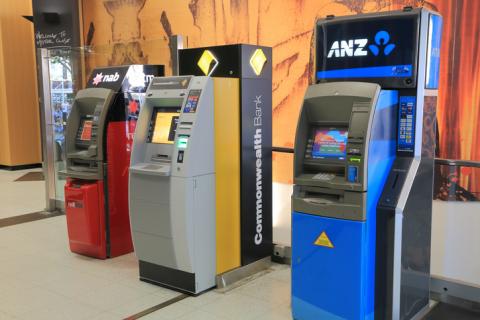You’ll need to organise many things before you study abroad, and a bank account is one that can be easily overlooked.
If you’re heading to study at a university in Australia then this guide can help you select a student bank account in Australia that works for you.
1. How to choose a bank in Australia
There are four major banks in Australia (ANZ, CommBank, National Australia Bank and Westpac Banking corporation) as well as a number of regional banks. There is plenty of choice for students, so do some research into what each bank offers and which works best for you.
It is important to bear in mind a few things before settling for the bank account that you want. The first is that some banks in Australia will charge fees at ATMs if you don’t bank with them, so it might be worth checking which banks have ATMs on campus and near where you live.
It is also important to check which type of card you will receive on opening your account. An EFTPOS card can only be used in Australia and doesn’t work for online shopping so may not be the best option for international students. However, a debit card can be used in Australia, internationally and online.
2. How to choose a bank account in Australia
There are two common types of bank accounts in Australia. They have different functions so it is important to choose the right account based on your needs.
1. Transaction accounts
A transaction account is the most common type of bank account and is used for day-to-day expenses. You can put money into the account and then access it as and when you want and use your debit card to shop or withdraw money from ATMs.
Most banks offer specific accounts for students that generally won’t have monthly fees or may not charge you to withdraw money from ATMs.
2. Savings accounts
This is where you can store money that you don’t need to use straight away. Not all students will need to open one of these but you may want to if you want to keep some money aside for emergencies, bigger purchases or travel.
3. Breakdown of bank accounts in Australia
There are a number of different banks across Australia that all offer different things for students.
| Bank | Account name | Monthly fee | Extras |
| CommBank | Student options (available for both international and domestic students) | $0 | Banking app with Spend Tracker, student discounts at chosen retailers and Cardless Cash options to get money out of a Commbank ATM, cashback when purchasing from certain brands |
| National Australia Bank (NAB) | NAB Classic Banking account or International Student Banking | $0 and $0 overdraft fees | Access to NAB app, digital wallet, use of the ATM network for free, can bank from any Australia Post office, choose between two different debit cards, no foreign currency fee, earn up to $10 cashback a month |
| Bankwest | Easy Transaction Account | $0 | Fewer ATM fees, open up to 10 Easy Transaction accounts to separate your money |
| Westpac | International student bank account | $0 | Get cashback deals (based on criteria), global ATM network, cardless cash withdrawals |
| Bank of Melbourne | Complete Freedom Account | $0 | Global ATM network, debit card can be used globally, fraud money back guarantee, balance alerts, access to Spend Tracker, discounts on some lifestyle brands, $50 cashback |
| ANZ | Student Access Advantage | $5 ($0 if you deposit at least $2,000 a month) | Secure unlimited transactions, tap and pay with mobile phone, fraud money back guarantee, eligible for ANZ First credit card |
4. How to open a bank account in Australia
You are able to set up a bank account in Australia up to three months before you arrive. You can fill in an online form on the website of your selected bank, which will require information such as your passport number and expiry date.
Once you arrive in Australia you can then book an appointment at your local branch and take in your passport and proof of address in Australia to prove your identity and ensure that you can access your money.
Alternatively, you are able to open your bank account in person, but this should ideally be done within the first six weeks of arrival. You’ll need to take along your passport, university acceptance letter and proof of a permanent address.

Comments